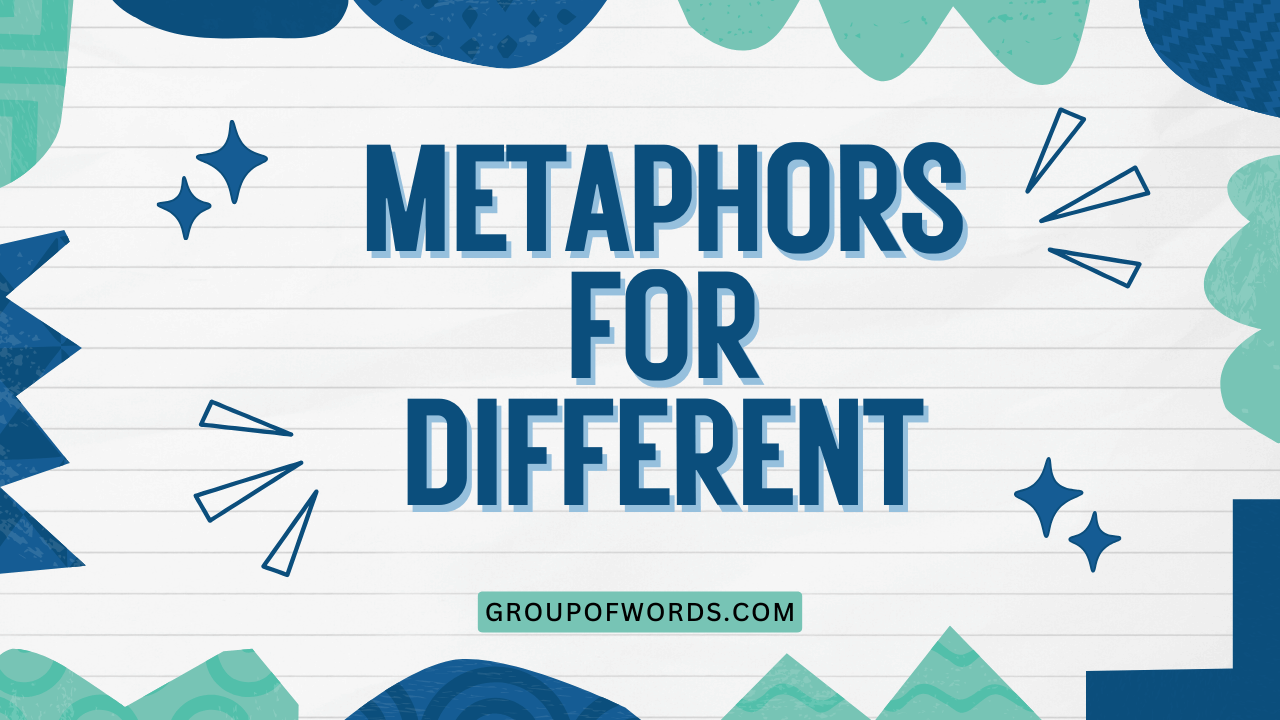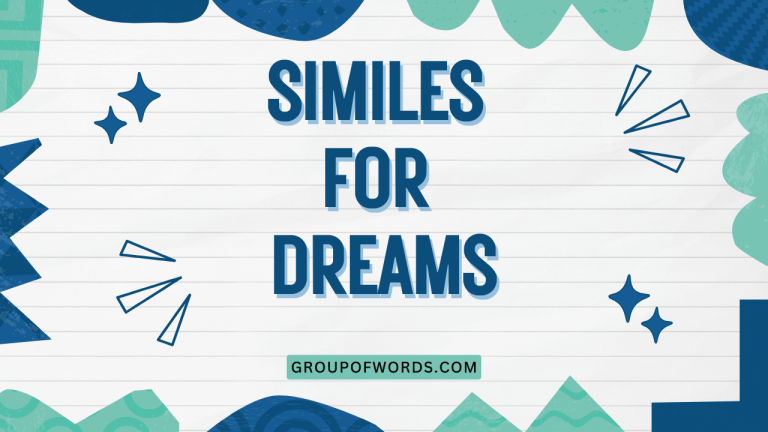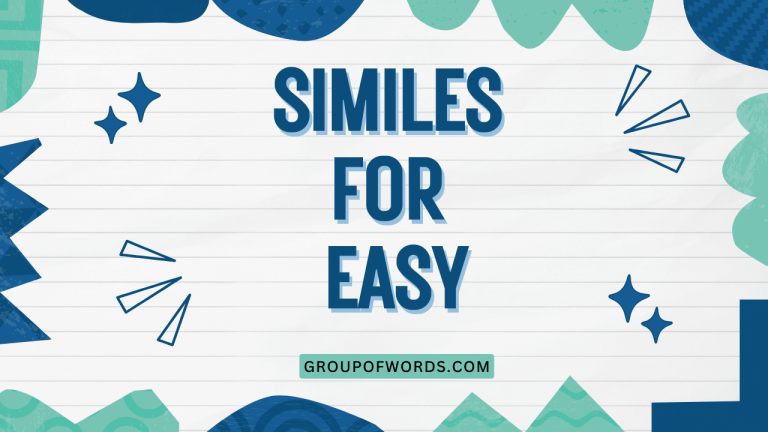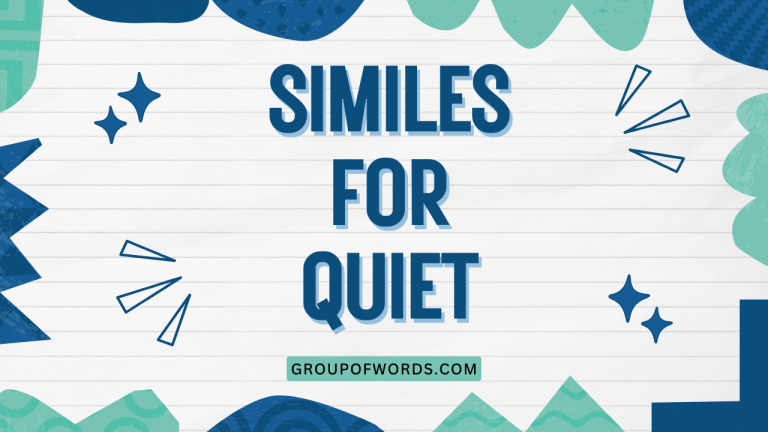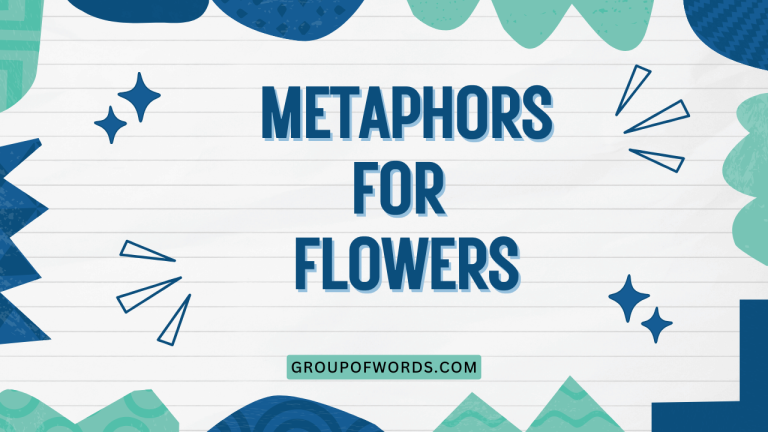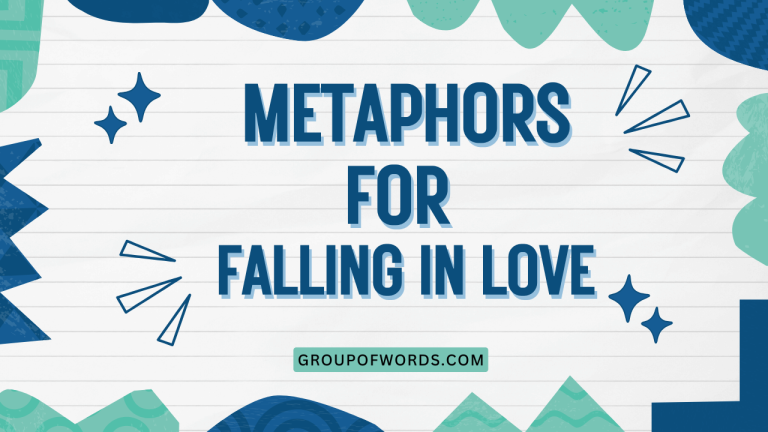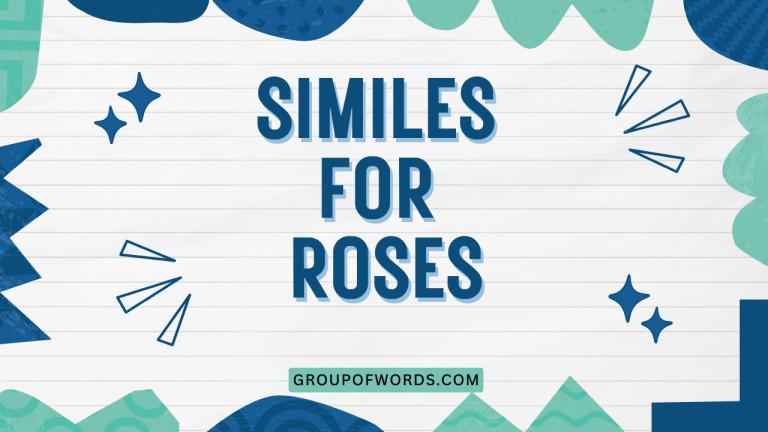Metaphors for “Different”: A Comprehensive Guide
Understanding how to use metaphors for the concept of “different” enhances your ability to communicate creatively and effectively. This article explores a wide range of metaphors that capture the nuances of difference, providing you with the tools to express yourself with greater precision and impact.
Whether you’re a student, writer, or language enthusiast, this guide will deepen your understanding of figurative language and its application in English grammar and composition.
By mastering these metaphors, you’ll be able to add color, depth, and originality to your writing and speech. This comprehensive guide covers various categories of metaphors for “different,” providing examples, usage rules, and practice exercises to solidify your understanding.
Let’s embark on this journey to unlock the power of metaphorical language!
Table of Contents
- Introduction
- Definition of Metaphor and “Different”
- Structural Breakdown of Metaphors
- Types and Categories of Metaphors for “Different”
- Examples of Metaphors for “Different”
- Usage Rules for Metaphors
- Common Mistakes with Metaphors
- Practice Exercises
- Advanced Topics in Metaphorical Language
- Frequently Asked Questions
- Conclusion
Definition of Metaphor and “Different”
A metaphor is a figure of speech that directly compares two unrelated things. Unlike similes, which use “like” or “as” to make a comparison, metaphors state that one thing is another. This creates a vivid and often surprising connection, enhancing understanding and emotional impact. Metaphors are essential tools in writing and communication, allowing us to express abstract ideas in concrete and relatable terms.
The word “different” signifies a state of being not the same, distinct, or dissimilar. It’s a fundamental concept that underlies many aspects of our perception and understanding of the world. Expressing “different” through metaphors allows us to capture the subtle nuances and varied dimensions of this concept, going beyond simple factual statements.
Metaphors for “different” can highlight the degree of variation, the nature of the distinction, or the emotional response it evokes. They can be used to create a sense of contrast, highlight uniqueness, or emphasize the impact of change.
Understanding the interplay between metaphors and the concept of “different” allows for more creative and effective communication.
Structural Breakdown of Metaphors
Metaphors typically consist of two key elements: the tenor and the vehicle. The tenor is the subject being described, and the vehicle is the object or concept used to describe it. In the context of metaphors for “different,” the tenor is always some aspect of difference, while the vehicle is the image or idea used to represent that difference.
For example, in the metaphor “Their approach was a world apart,” the tenor is the difference in approach, and the vehicle is “a world apart,” which suggests a vast and significant divergence. The effectiveness of a metaphor depends on the clarity and relevance of the connection between the tenor and the vehicle. A strong metaphor creates a vivid and memorable image that resonates with the audience.
Understanding the structural components of a metaphor allows you to analyze and appreciate its effectiveness. It also empowers you to create your own metaphors, carefully selecting vehicles that accurately and powerfully convey the intended meaning.
The interplay between tenor and vehicle is crucial for crafting compelling and insightful metaphors.
Types and Categories of Metaphors for “Different”
Metaphors for “different” can be categorized in several ways, depending on the type of imagery or association they employ. Below are some common categories with detailed explanations and examples.
Spatial Metaphors
Spatial metaphors use concepts of space and location to represent differences. They often evoke a sense of distance, separation, or orientation.
- Examples: “worlds apart,” “on different wavelengths,” “a different path,” “poles apart,” “a chasm between them.”
- Function: To emphasize the magnitude of the difference or the separation between two things.
Sensory Metaphors
Sensory metaphors appeal to the senses (sight, sound, smell, taste, touch) to describe differences. They can evoke strong emotional responses and create vivid images.
- Examples: “a jarring note,” “a stark contrast,” “a different flavor,” “a rough texture,” “a blinding light.”
- Function: To highlight the immediate and often visceral impact of the difference.
Temporal Metaphors
Temporal metaphors use concepts of time to represent differences, often suggesting change, evolution, or a shift in perspective.
- Examples: “a bygone era,” “ahead of its time,” “a new chapter,” “a turning point,” “a sea change.”
- Function: To emphasize the historical or evolutionary aspect of the difference.
Comparative Metaphors
Comparative metaphors directly compare two or more things to highlight their differences, often using established benchmarks or archetypes.
- Examples: “like comparing apples and oranges,” “a different breed,” “cut from a different cloth,” “not in the same league,” “a different animal altogether.”
- Function: To emphasize the fundamental and often incompatible nature of the difference.
Transformative Metaphors
Transformative metaphors describe differences in terms of change, alteration, or evolution. These metaphors emphasize how something has become different over time.
- Examples: “a butterfly from a caterpillar,” “a phoenix rising from ashes,” “a diamond in the rough,” “a complete metamorphosis,” “a paradigm shift.”
- Function: To highlight the journey or process that has led to the difference.
Elemental Metaphors
Elemental metaphors use the basic elements of nature (earth, water, fire, air) to represent differences, often suggesting fundamental or intrinsic qualities.
- Examples: “like oil and water,” “a breath of fresh air,” “a raging fire,” “solid as a rock,” “shifting sands.”
- Function: To emphasize the inherent or unchangeable nature of the difference.
Oppositional Metaphors
Oppositional metaphors highlight differences by contrasting opposing forces or concepts. These metaphors emphasize the conflict or tension between two things.
- Examples: “day and night,” “black and white,” “yin and yang,” “fire and ice,” “heaven and hell.”
- Function: To emphasize the stark contrast and irreconcilable nature of the difference.
Examples of Metaphors for “Different”
This section provides a wide range of examples of metaphors for “different,” organized by the categories discussed above. Each table offers a variety of contexts and applications.
Spatial Metaphors Examples
The table below illustrates various spatial metaphors used to describe differences. Notice how each metaphor evokes a sense of physical or conceptual distance.
| Metaphor | Example Sentence | Explanation |
|---|---|---|
| Worlds apart | Their political views are worlds apart. | Indicates a vast and irreconcilable difference. |
| On different wavelengths | They were on different wavelengths during the meeting. | Suggests a lack of understanding or agreement. |
| A different path | She chose a different path in life. | Implies a divergence from the norm or expectation. |
| Poles apart | The two candidates are poles apart on economic policy. | Emphasizes extreme opposition. |
| A chasm between them | A chasm of misunderstanding grew between them. | Indicates a deep and unbridgeable gap. |
| Miles away | His thoughts were miles away. | Suggests a mental or emotional detachment. |
| A separate universe | Living in a city is a separate universe from living in the countryside. | Highlights the distinct experiences of different environments. |
| An island unto himself | He was an island unto himself, rarely interacting with others. | Emphasizes isolation and difference from the group. |
| Divergent roads | They took divergent roads after graduation. | Implies different life choices and paths. |
| A different plane of existence | To some, art exists on a different plane of existence. | Suggests a higher or more abstract level. |
| Outside the box | She always thinks outside the box. | Indicates innovative and unconventional thinking. |
| Off the beaten track | They preferred to travel off the beaten track. | Highlights a preference for the unusual or less common. |
| A different league | The professional team was in a different league compared to the amateurs. | Emphasizes a significantly higher level of skill or quality. |
| A world of difference | There’s a world of difference between knowledge and wisdom. | Highlights a substantial and meaningful distinction. |
| Out of sync | Their schedules were out of sync. | Implies a lack of coordination or alignment. |
| Far removed | The reality was far removed from their expectations. | Indicates a significant deviation from what was anticipated. |
| A different dimension | His creativity added a different dimension to the project. | Suggests an added layer of complexity or depth. |
| On opposite sides of the spectrum | Their opinions were on opposite sides of the spectrum. | Emphasizes extreme divergence in viewpoints. |
| A step removed | As an observer, he felt a step removed from the action. | Indicates a sense of detachment or distance. |
| A separate entity | The subsidiary company operated as a separate entity. | Highlights independence and distinct identity. |
| A different sphere | Politics exists in a different sphere from personal relationships. | Suggests distinct areas of activity or influence. |
| Beyond the pale | His behavior was beyond the pale. | Indicates unacceptable or outrageous conduct. |
| In a league of their own | The athletes were in a league of their own. | Highlights exceptional talent and performance. |
Sensory Metaphors Examples
This table showcases metaphors that use sensory experiences to convey differences. Consider how each metaphor engages the senses to create a vivid impression.
| Metaphor | Example Sentence | Explanation |
|---|---|---|
| A jarring note | His comment struck a jarring note in the otherwise harmonious discussion. | Suggests a disruptive or unpleasant element. |
| A stark contrast | There was a stark contrast between their lifestyles. | Emphasizes a sharp and noticeable difference. |
| A different flavor | The new chef brought a different flavor to the restaurant. | Indicates a unique and distinctive quality. |
| A rough texture | The relationship had developed a rough texture over time. | Suggests difficulty and friction. |
| A blinding light | The truth hit him like a blinding light. | Highlights a sudden and overwhelming realization. |
| A bitter taste | The betrayal left a bitter taste in her mouth. | Indicates a feeling of resentment or disappointment. |
| A sweet melody | Their friendship was a sweet melody in his life. | Suggests harmony and pleasantness. |
| A pungent aroma | The scandal had a pungent aroma that lingered for months. | Emphasizes a strong and unpleasant sensation. |
| A velvety touch | Her voice had a velvety touch that captivated the audience. | Suggests smoothness and gentleness. |
| A deafening silence | A deafening silence followed his announcement. | Highlights the intensity of the reaction. |
| A colorful tapestry | The city was a colorful tapestry of cultures. | Indicates a diverse and vibrant mix. |
| A muted tone | Her response had a muted tone. | Suggests a subtle or restrained approach. |
| A piercing gaze | His piercing gaze made her uncomfortable. | Emphasizes intensity and scrutiny. |
| A grating sound | The argument had a grating sound. | Indicates an unpleasant and irritating quality. |
| A shimmering vision | Her dream was a shimmering vision of the future. | Suggests beauty and hope. |
| A dull ache | Loneliness was a dull ache in her heart. | Indicates a persistent and subtle pain. |
| A sparkling wit | He had a sparkling wit that made everyone laugh. | Highlights intelligence and humor. |
| A rough edge | His personality had a rough edge. | Suggests a lack of refinement or tact. |
| A soothing balm | Her words were a soothing balm to his wounded spirit. | Indicates comfort and healing. |
| A blinding flash | The idea came to him in a blinding flash. | Highlights sudden inspiration. |
| A somber hue | The news cast a somber hue over the gathering. | Suggests sadness and seriousness. |
| A sweet fragrance | Success had a sweet fragrance to it. | Suggests pleasantness and reward. |
| A harsh reality | Life can be a harsh reality. | Emphasizes difficulty and adversity. |
Temporal Metaphors Examples
The following table presents temporal metaphors that illustrate differences in terms of time and change. Notice how they convey a sense of progression or evolution.
| Metaphor | Example Sentence | Explanation |
|---|---|---|
| A bygone era | Her style was reminiscent of a bygone era. | Indicates a time that has passed and is no longer relevant. |
| Ahead of its time | The invention was ahead of its time. | Suggests innovation and forward-thinking. |
| A new chapter | Starting college was a new chapter in her life. | Highlights a fresh start and new opportunities. |
| A turning point | The decision was a turning point in his career. | Indicates a significant change in direction. |
| A sea change | The internet brought about a sea change in communication. | Emphasizes a profound and widespread transformation. |
| A dawn of a new age | The discovery marked the dawn of a new age in medicine. | Suggests the beginning of an important and transformative period. |
| A relic of the past | The old typewriter was a relic of the past. | Indicates something outdated and no longer in use. |
| A glimpse into the future | The technology offered a glimpse into the future. | Highlights potential developments and innovations. |
| A blast from the past | The song was a blast from the past. | Suggests a nostalgic reminder of a previous time. |
| A watershed moment | The event was a watershed moment in history. | Indicates a pivotal and transformative event. |
| A period of transition | She was in a period of transition after graduation. | Suggests a time of change and adjustment. |
| A bygone dream | Her aspirations became a bygone dream. | Indicates a goal that is no longer attainable. |
| The sands of time | The sands of time kept moving. | Emphasizes the relentless passage of time. |
| A modern twist | The recipe had a modern twist. | Suggests an updated and contemporary approach. |
| An ancient secret | The legend held an ancient secret. | Highlights something hidden and old. |
| A future shock | The rapid changes caused a future shock. | Indicates disorientation due to rapid technological advancements. |
| A timeless classic | The book is a timeless classic. | Suggests enduring quality and relevance. |
| A fleeting moment | Happiness is often a fleeting moment. | Emphasizes the transience of joy. |
| A delayed reaction | There was a delayed reaction. | Suggests something happening later than expected. |
| A new dawn | The end of the war was a new dawn for the country. | Indicates the beginning of a better time. |
| A historic event | The moon landing was a historic event. | Highlights significant and memorable events. |
| Outdated practices | The policy relies on outdated practices. | Suggests methods that are no longer useful or efficient. |
| Impending doom | Impending doom was in the air. | Emphasizes a sense of inevitable disaster. |
Usage Rules for Metaphors
Using metaphors effectively requires careful consideration of several rules. First, ensure that the vehicle is appropriate and relevant to the tenor. The connection should be clear and logical, avoiding forced or confusing comparisons.
Second, maintain consistency within the metaphor. Avoid mixing metaphors that clash or create contradictory images. For example, “He nipped that idea in the bud and then ran with it” is a mixed metaphor and should be avoided. Choose one dominant image and stick with it.
Third, be mindful of your audience. The effectiveness of a metaphor depends on their understanding and cultural background. A metaphor that resonates with one audience may be meaningless or offensive to another. Consider the context and adjust your language accordingly.
Fourth, use metaphors sparingly. Overusing metaphors can make your writing feel contrived and overwhelming.
Use them strategically to enhance your message, not to obscure it. A well-placed metaphor can be powerful, but too many can dilute their impact.
Fifth, originality is key. While some metaphors are common and well-understood, strive to create fresh and imaginative comparisons. This will make your writing more engaging and memorable. However, avoid being so obscure that your meaning is lost. Balance originality with clarity.
Common Mistakes with Metaphors
One common mistake is using clichéd metaphors. These are overused expressions that have lost their impact and can make your writing sound unoriginal. Examples include “thinking outside the box” or “a drop in the bucket.” Try to find more creative and specific alternatives.
Another frequent error is creating mixed metaphors, as mentioned earlier. This occurs when you combine two or more incompatible metaphors in the same sentence or passage. Mixed metaphors can be confusing and undermine your credibility. Correcting them involves choosing a single, consistent image.
Misunderstanding the connotations of a metaphor is another pitfall. Words and images can have different associations for different people. Ensure that your chosen metaphor conveys the intended meaning and does not unintentionally evoke negative or misleading associations. Research and careful word choice are essential.
Finally, using metaphors that are too complex or obscure can confuse your audience. While creativity is important, prioritize clarity. If your metaphor requires extensive explanation, it may be too convoluted. Aim for metaphors that are both imaginative and easily understandable.
Here are some examples of common mistakes with metaphors:
| Incorrect | Correct | Explanation |
|---|---|---|
| He was skating on thin ice, but he was also sitting on top of the world. | He was skating on thin ice. | Avoid mixing metaphors. |
| The project was a drop in the bucket, thinking outside the box. | The project was a small contribution. | Avoid clichés. |
| Her anger was a volcano of sunshine. | Her anger was a raging volcano. | Ensure the metaphor is logical. |
Practice Exercises
Test your understanding of metaphors for “different” with these exercises. Identify the type of metaphor used in each sentence and provide an explanation of its meaning.
Exercise 1: Identifying Metaphor Types
| Question | Answer |
|---|---|
| 1. Their opinions were as different as night and day. | Oppositional metaphor: Highlights the stark contrast between their opinions. |
| 2. He was a different breed of politician. | Comparative metaphor: Emphasizes his unique and unconventional approach. |
| 3. She felt like a fish out of water in the new environment. | Spatial metaphor: Indicates discomfort and unfamiliarity. |
| 4. The scandal left a sour taste in everyone’s mouth. | Sensory metaphor: Suggests a feeling of disgust and disappointment. |
| 5. The invention was a leap into the future. | Temporal metaphor: Highlights innovation and progress. |
| 6. They were speaking a different language. | Spatial metaphor: Emphasizes a lack of understanding and communication. |
| 7. He was a diamond in the rough. | Transformative metaphor: Indicates hidden potential and value. |
| 8. The two ideas were like oil and water. | Elemental metaphor: Emphasizes incompatibility and separation. |
| 9. The experience was a breath of fresh air. | Elemental metaphor: Suggests revitalization and novelty. |
| 10. It was a different ball game altogether. | Comparative metaphor: Highlights a significant change in circumstances. |
Exercise 2: Creating Metaphors
Complete the following sentences by adding an appropriate metaphor for “different.”
| Question | Answer |
|---|---|
| 1. Their approaches to the problem were __________. | Worlds apart. |
| 2. The new policy was a __________ compared to the old one. | Sea change. |
| 3. He was __________ in a sea of conformity. | A different breed. |
| 4. The experience left a __________ in her memory. | Bitter taste. |
| 5. Her ideas were always __________. | Ahead of their time. |
| 6. The two cultures were __________. | Poles apart. |
| 7. The new technology was a __________. | Turning point. |
| 8. His perspective was __________. | A breath of fresh air. |
| 9. Their relationship was __________. | On different wavelengths. |
| 10. The company was __________. | In a league of its own. |
Advanced Topics in Metaphorical Language
For advanced learners, exploring the nuances of extended metaphors can be particularly rewarding. An extended metaphor is a metaphor that is developed over several lines or even throughout an entire work. This allows for a more complex and nuanced exploration of the comparison.
Another advanced topic is the use of dead metaphors. These are metaphors that have become so common that they are no longer recognized as metaphors. While they can be useful for conveying familiar concepts, they can also lack impact. Recognizing and revitalizing dead metaphors can add freshness to your writing.
Additionally, consider the role of cultural metaphors. These are metaphors that are specific to a particular culture or community. Understanding cultural metaphors is essential for effective cross-cultural communication. Be mindful of the potential for misinterpretation when using cultural metaphors with a diverse audience.
Finally, explore the use of metaphors in different genres and contexts. Metaphors are used differently in poetry, prose, and academic writing.
Analyzing how metaphors function in various forms of communication can deepen your understanding of their power and versatility.
Frequently Asked Questions
Here are some frequently asked questions about metaphors for “different.”
- What is the difference between a metaphor and a simile?
A metaphor directly equates two unlike things, stating that one is the other (e.g., “He is a lion”). A simile, on the other hand, uses “like” or “as” to make a comparison (e.g., “He is like a lion”). Metaphors are often more powerful and evocative, while similes are more explicit and direct.
- How can I avoid using clichéd metaphors?
To avoid clichés, focus on creating original and specific comparisons. Think about the unique qualities of the things you are comparing and try to find fresh and unexpected connections. Read widely and pay attention to the language used by skilled writers.
- What are some common examples of mixed metaphors?
Common examples include “nip it in the bud and run with it,” “burning the candle at both ends to keep all your ducks in a row,” and “hitting the nail on the head to open a can of worms.” These phrases combine incompatible images, creating confusion.
- How do I know if a metaphor is appropriate for my audience?
Consider your audience’s background, knowledge, and cultural context. Choose metaphors that are likely to resonate with them and avoid metaphors that may be confusing or offensive. Test your metaphors with a sample audience to get feedback.
- Can a metaphor be too complex?
Yes, a metaphor can be too complex if it requires extensive explanation or if it obscures your meaning. Aim for metaphors that are both imaginative and easily understandable. If your metaphor is too convoluted, it may be better to choose a simpler and more direct comparison.
- How can I improve my ability to create effective metaphors?
Practice regularly, read widely, and pay attention to the world around you. Look for unexpected connections between seemingly unrelated things. Experiment with different types of metaphors and get feedback from others. The more you practice, the better you will become at crafting compelling and insightful metaphors.
- Are there any cultural considerations when using metaphors?
Yes, metaphors can be deeply rooted in culture, and what resonates in one culture may not in another. Be aware of cultural differences in communication styles and figurative language. When communicating across cultures, it’s often best to use simple, direct language and avoid potentially confusing or offensive metaphors.
- What is the role of metaphors in persuasive writing?
Metaphors can be powerful tools in persuasive writing. They can help to make abstract ideas more concrete, evoke emotions, and create memorable images. By using metaphors effectively, you can strengthen your arguments and make your writing more compelling and persuasive.
Conclusion
Mastering metaphors for “different” is a valuable skill that enhances your ability to communicate creatively and effectively. By understanding the different types of metaphors, their structural components, and the rules governing their use, you can add depth, color, and originality to your writing and speech.
Remember to avoid clichés, mixed metaphors, and overly complex comparisons. Practice regularly and be mindful of your audience to create metaphors that resonate and inspire.
Continue to explore the world of metaphorical language and experiment with different ways of expressing the concept of “different.” The more you practice, the more confident and skilled you will become at using metaphors to enrich your communication. Embrace the power of figurative language and unlock new possibilities for expression.
By exploring the nuances of metaphorical language, you’ll not only enhance your writing skills but also deepen your understanding of how language shapes our perception of the world. Keep practicing, keep exploring, and keep pushing the boundaries of your creative expression!
